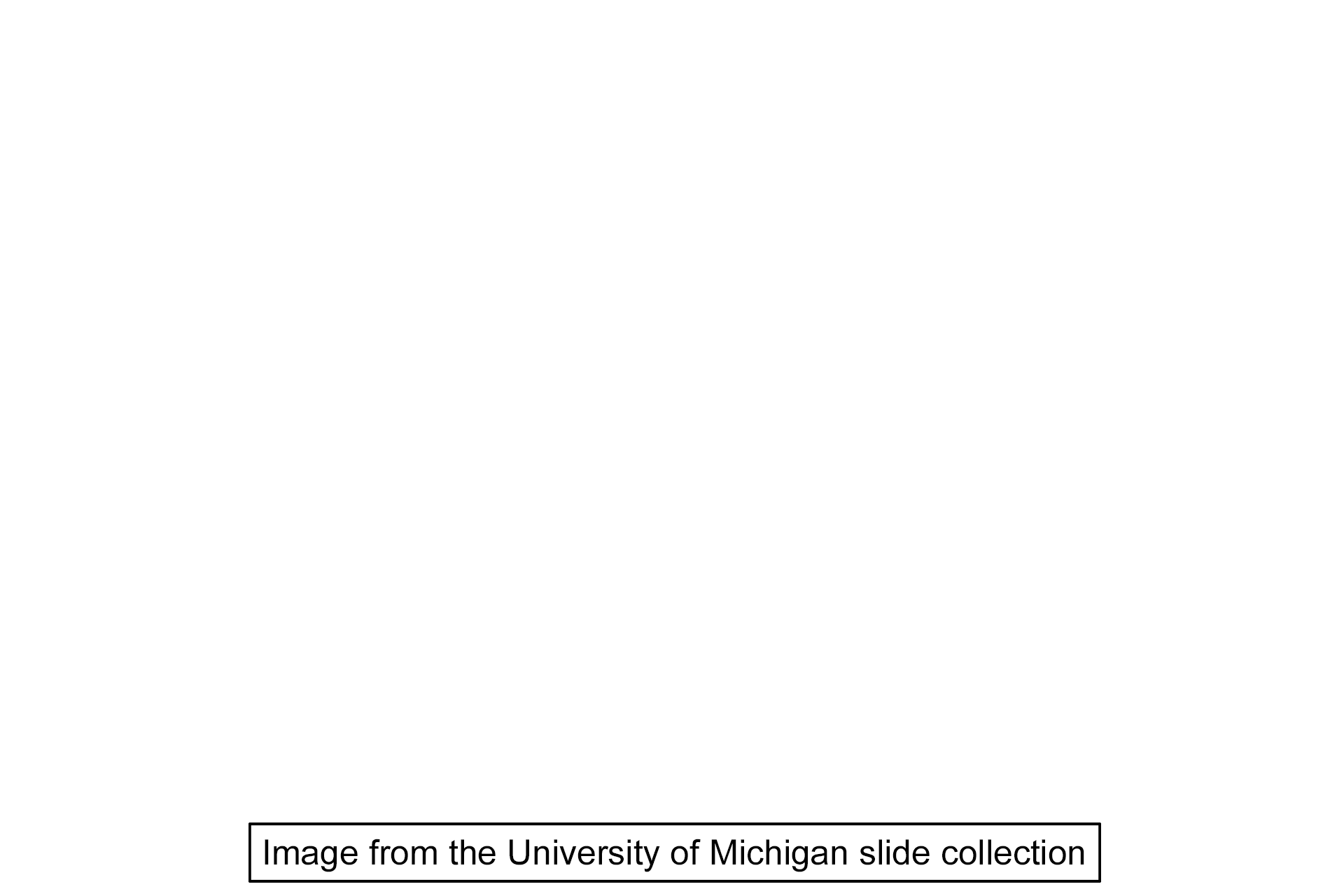
Tooth
This image shows a demineralized section of a tooth and its surrounding periodontium, gingiva and bone forming the alveolar process. 10x

Enamel >
Because of its high calcium content, little visible enamel remains in a decalcified tooth preparation such as this. The approximate location of the enamel is shown in blue. Dentin comprises the bulk of the tooth and is formed throughout life. Cementum, a thin layer surrounding the dentin of the tooth root, is also formed throughout life; a thickening reflecting the continued growth of this layer is seen on the apex of the left root.

Dentin
Because of its high calcium content, little visible enamel remains in a decalcified tooth preparation such as this. The approximate location of the enamel is shown in blue. Dentin comprises the bulk of the tooth and is formed throughout life. Cementum, a thin layer surrounding the dentin of the tooth root, is also formed throughout life; a thickening reflecting the continued growth of this layer is seen on the apex of the left root.

Cementum
Because of its high calcium content, little visible enamel remains in a decalcified tooth preparation such as this. The approximate location of the enamel is shown in blue. Dentin comprises the bulk of the tooth and is formed throughout life. Cementum, a thin layer surrounding the dentin of the tooth root, is also formed throughout life; a thickening reflecting the continued growth of this layer is seen on the apex of the left root.

Pulp chamber >
In the living tooth the pulp chamber is filled with connective tissue, blood vessels, nerves and lymphatics. Odontoblasts are located in the pulp chamber immediately adjacent to the dentin, into which their processes extend. The volume of the pulp cavity decreases throughout life with the continued deposition of dentin by odontoblasts.

Periodontal ligament >
The periodontal ligament extends between the cementum of the tooth and alveolar bone, suspending the tooth between these two hard tissues. The periodontal ligament cushions the tooth from the forces of mastication.

Alveolar bone >
Alveolar bone forms the socket of a tooth, the alveolus, and is continuous with the maxillary or mandibular bone of which it is a part.

Gingiva >
The gingiva (commonly called the gums) is composed of the epithelia and connective tissue that surround and suppport the tooth. Subdivisions of the gingiva include masticatory mucosa covering its external surface, sulcular epithelium facing the gingival sulcus, and attachment epithelium that is attached to the tooth. Fibers in the gingival lamina propria anchor the gingiva to the tooth and alveolar bone.

Gingival sulcus >
The gingival sulcus is a circular moat located between the enamel of the tooth and the sulcular epithelium of the gingiva. In life, the sulcular epithelium is closely applied to the enamel.

Sulcular epithelium >
Sulcular epithelium forms the portion of the gingiva facing the gingival sulcus and is composed of a stratified squamous moist epithelium.

Masticatory epithelium >
The stratified squamous epithelium forming part of the masticatory mucosa covers the gingiva and may be either ortho- or parakeratinized. The lamina propria of this mucosa is firmly attached to the tooth and to the underlying alveolar bone.

Lining mucosa >
Lining mucosa continues from the masticatory mucosa and usually possesses stratified squamous moist epithelium. It appears to be parakeratinized in this image, however, probably due to extra trauma to this area.

Image source >
This image was taken of a slide from the University of Michigan collection.